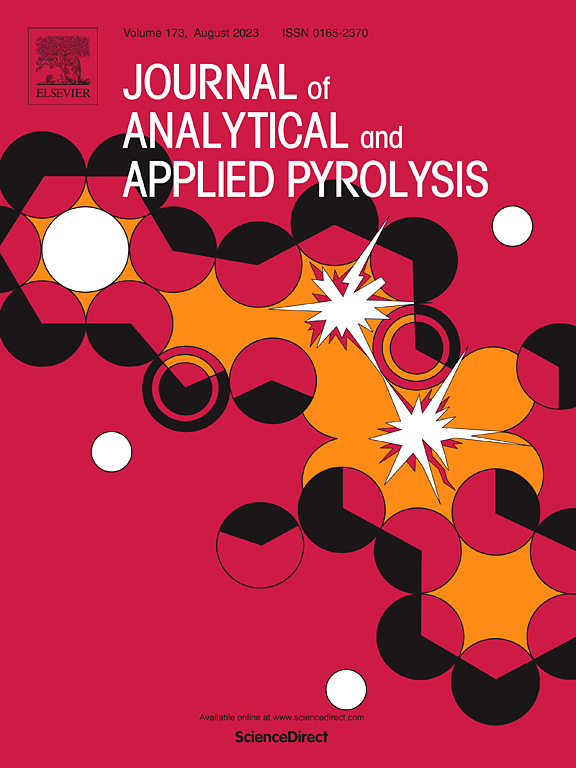Pyrolysis characteristics of pulverized coal in circulating fluidized bed with a multi-section variable-diameter riser
IF 6.2
2区 化学
Q1 CHEMISTRY, ANALYTICAL
引用次数: 0
Abstract
An innovative circulating fluidized bed (CFB) structure with a multi-section variable-diameter riser was proposed to pyrolyze pulverized coal for tar production in this study. Experimental investigations on pulverized coal pyrolysis were conducted to explore the operational characteristics and pyrolysis product distribution of this specially designed CFB reactor, as well as the interconversion mechanisms among distinct pyrolysis products. Results show that the riser’s constricted structure enables the spatially partitional reaction regime: a high-temperature dilute-phase char partial gasification occurs below the constricted section, while a low-temperature dense-phase coal pyrolysis above the constricted section. By adjusting the oxygen concentration and equivalence ratio in gasification zone, the sensible heat and composition of gas-solid heat carrier (GSHC) can be effectively controlled, thereby changing the temperature of the pyrolysis zone. Whether it is the increase of oxygen concentration or the increase of equivalence ratio would lead to the increase of syngas content and the decrease of char content. Under the same pyrolysis temperature, the increase of oxygen concentration in gasification zone led to the increase of pyrolysis tar content. A simple molecular model of pulverized coal was established by the FTIR and Raman analysis to reveal transformation of functional groups. The aromatic ether and carboxylic acid, situating at the periphery of molecular model, served as primary sources of oxygen-containing substances. Aliphatic hydrocarbons underwent condensation reaction around 600 ˚C, which enhanced the concentration of larger polycyclic aromatic hydrocarbons in pyrolysis tar.
煤粉在多段变直径提升管循环流化床中的热解特性
提出了一种具有多段变直径提升管的新型循环流化床(CFB)结构,用于煤粉热解制焦油。通过对煤粉热解的实验研究,探讨了该特别设计的循环流化床反应器的运行特性和热解产物分布,以及不同热解产物之间的相互转化机理。研究结果表明:提升管的缩窄结构使得反应过程在空间上发生了分区,缩窄段下方发生了高温稀相焦部分气化,缩窄段上方发生了低温密相煤热解。通过调节气化区氧浓度和当量比,可以有效控制气固热载体(GSHC)的显热和组成,从而改变热解区温度。无论是氧气浓度的增加还是等效比的增加都会导致合成气含量的增加和炭含量的降低。在相同热解温度下,气化区氧浓度的增加导致热解焦油含量的增加。通过红外光谱(FTIR)和拉曼光谱(Raman)分析,建立了煤粉的简单分子模型,揭示了官能团的转变。芳香醚和羧酸位于分子模型的外围,是含氧物质的主要来源。600℃左右脂肪烃发生缩合反应,使热解焦油中较大的多环芳烃浓度增加。
本文章由计算机程序翻译,如有差异,请以英文原文为准。
求助全文
约1分钟内获得全文
求助全文
来源期刊
CiteScore
9.10
自引率
11.70%
发文量
340
审稿时长
44 days
期刊介绍:
The Journal of Analytical and Applied Pyrolysis (JAAP) is devoted to the publication of papers dealing with innovative applications of pyrolysis processes, the characterization of products related to pyrolysis reactions, and investigations of reaction mechanism. To be considered by JAAP, a manuscript should present significant progress in these topics. The novelty must be satisfactorily argued in the cover letter. A manuscript with a cover letter to the editor not addressing the novelty is likely to be rejected without review.

 求助内容:
求助内容: 应助结果提醒方式:
应助结果提醒方式:


